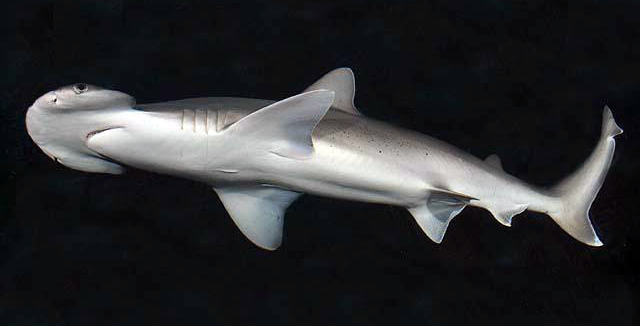Not all sharks feed only on meat—at least one shark species also feeds on seagrass. Scientists have confirmed that one of the most common sharks in the world is an omnivore.
The bonnethead shark, a relative of the much larger hammerhead shark, munches on seagrass for about 60 percent of its diet and has a gut capable of digesting greens—similar to that of juvenile green sea turtles and even better than those of pandas, scientists say in a study published Sept. 5 in Proceedings of The Royal Society B.
“We have always thought of sharks as strict carnivores, but the bonnethead is throwing a wrench into that idea by digesting a fair amount of the seagrass that they consume,” Samantha Leigh, a marine biologist at the University of California, Irvine, and lead author of the new study, told Fox News.
These sharks are commonly found in the coastal waters of the eastern Pacific ocean, the western Atlantic ocean and the Gulf of Mexico. It was generally thought that they fed mainly on crustaceans and mollusks. They are abundant, with a population of about 4.9 million, Newsweek reported.

It was uncertain whether the sharks were actually feeding on the seagrass or just accidentally eating the vegetation while hunting for other prey.
“It has been assumed by most that this consumption [of seagrass] was incidental and that it provided no nutritional value,” Leigh told The Guardian.
“I wanted to see how much of this seagrass diet the sharks could digest, because what an animal consumes is not necessarily the same as what it digests and retains nutrients from.”
A 3-Week Feed

To test how much the bonnethead could actually digest from seagrass, Leigh and colleagues fed five bonnethead sharks a diet comprising 90 percent seagrass and 10 percent squid for three weeks in a laboratory environment.
All sharks were euthanized at the end of the three weeks to examine their gut content, Gizmodo reported.
The researchers analyzed the waste of the sharks to see how much of each nutrient type was excreted compared to what the sharks had eaten.
They found the sharks did indeed digest and absorb the nutrients from the seagrass—about half of the organic contents.
The researchers able to confirm that the bonnethead sharks possessed the enzymes needed to break down fibres and carbohydrates. “The bonnethead shark had very high levels of these types of enzymes!” Leigh told Gizmodo.
Implications
Researchers say the fact that these bonnethead sharks eat a lot of seagrass and that there are a great number of them in the world means they may play a significant role in nutrient transport within the coastal ecosystem.
“Seagrasses are extremely important … they produce oxygen, they create a nursery for many commercially important fish species, they filter toxins out of the water, and more,” Leigh told Gizmodo.
“However, many seagrass meadows are declining in health and abundance. This study is the first step in determining how the bonnethead shark truly fits into this type of habitat,” she added.
Gavin Naylor, Director of the Florida Program for Shark Research at the University of Florida, said the study was limited in its sample size and time.
“The experiment was done on five animals over a three week period. This is insufficient to be to be compelling,” he told Newsweek.
“They would need to run the experiment with many many more individuals for at least six months.
“A three week study probably only served to demonstrate a stress response as evidenced by the variable responses among the individuals.”
Naylor also said the conclusions reached by the study are unsubstantiated. He told Newsweek: “Sharks generally sit close to the apex of trophic hierarchies. Apex predators have far more influence on vegetation patterns via indirect effects than they do via direct ingestion.
“Predators control the populations of the herbivores upon which they prey, which, in turn, control the vegetation upon which they feed.
“The notion that bonnethead sharks might have a major impact on seagrass beds through the seagrass they consume directly as juveniles is—in my opinion—unsubstantiated speculation.”
From The Epoch Times


